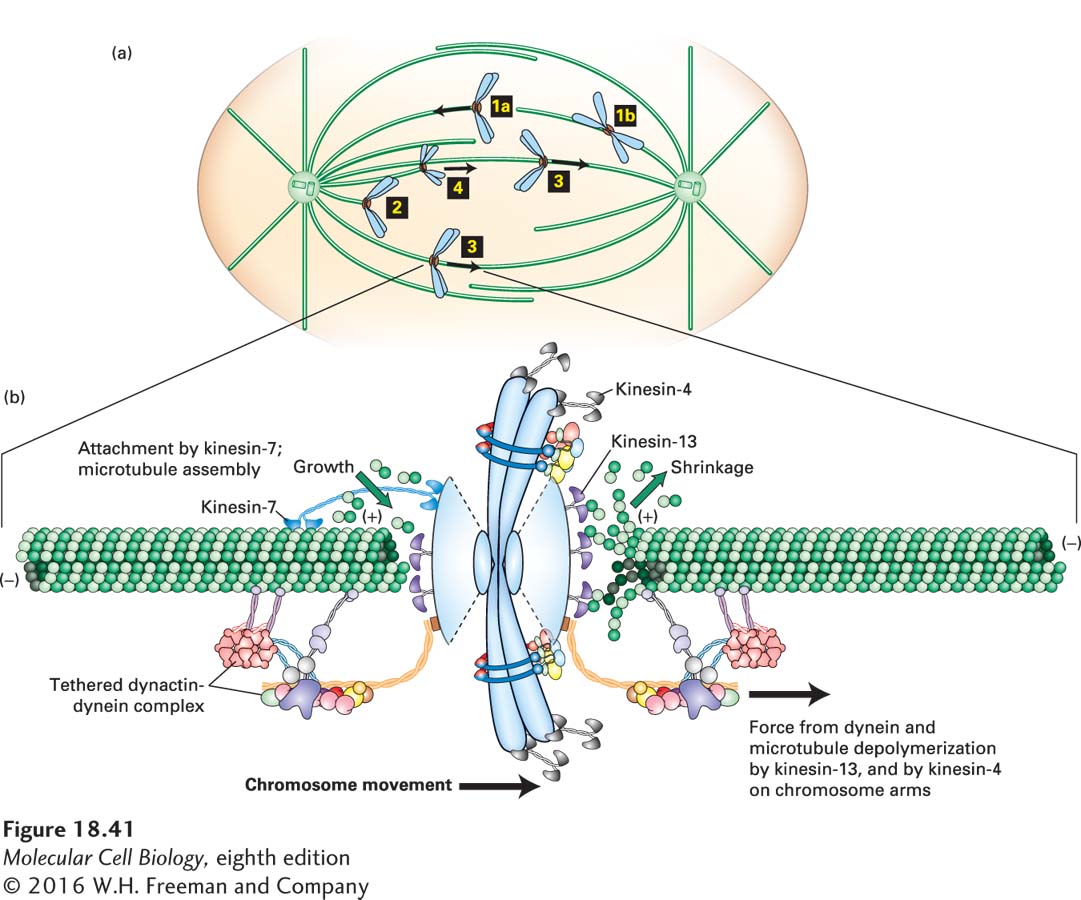
FIGURE 18- 41 Chromosome capture and congression in prometaphase. (a) In the first stage of prometaphase, chromosomes become attached either to the end of a microtubule (1a) or to the side of a microtubule (1b). The chromosome is then drawn toward the spindle pole by dynein- dynactin that becomes associated with one of the kinetochores of the chromosome and moves toward the (−) end of the microtubule (2). Eventually, a microtubule from the opposite pole finds and becomes attached to the free kinetochore, and the chromosome is now said to be bi- oriented (3). Once some chromosomes are bi- oriented, others, having established one kinetochore- pole interaction, use CENP- E/kinesin- 7 on their free kinetochore to aid in orientation (4). The bi- oriented chromosomes then move to a central point between the spindle poles in a process known as chromosome congression. Note that during these steps, chromosome arms point away from the closest spindle pole: this is due to chromokinesin/kinesin- 4 motors on the chromosome arms moving toward the (+) ends of the polar microtubules. In animal cells, many microtubules associate with each kinetochore. For ease of presentation, only single kinetochore microtubules are shown here. (b) Congression involves bidirectional oscillations of chromosomes, with one set of kinetochore microtubules shortening on one side of the chromosomes and the other set lengthening on the other. On the shortening side, a kinesin- 13 protein stimulates microtubule disassembly and a dynein- dynactin complex moves the chromosome toward the pole. On the side with lengthening microtubules, kinesin- 7 protein holds on to the growing microtubule. The kinetochore also contains many additional protein complexes not shown here. See Cleveland et al., 2003, Cell 112:407– 421.
[Leave] [Close]